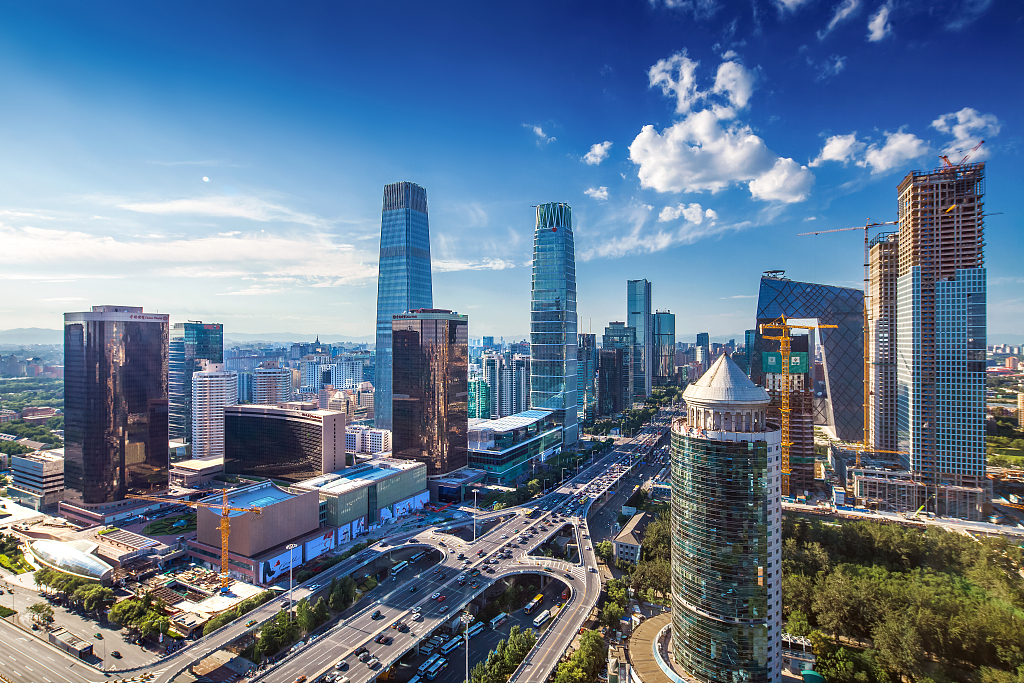Institutional ingredients for China's resilience


BEIJING - China's economy has defied growing risks and downward pressure this year, with "sustained and sound development" as summed up by a key annual economic meeting concluded Thursday.
The country's GDP expanded 6.2 percent year-on-year in the first three quarters of 2019, the fastest growth among all economies with annual output above $1 trillion. Employment has been stable, manufacturing activity has rebounded, while foreign trade and direct investment inflows are continuing to grow.
"The basic trend of the Chinese economy maintaining steady growth toward long-term sound development remains unchanged," according to the Central Economic Work Conference.
To find the key to China's resilience, one has to delve into its economic system, observers said.
Socialism & market economy
China's capability of navigating through external and domestic headwinds reflects the time-tested wisdom of creating synergy between the socialist system and the market economy.
"By integrating the advantages of the socialist system and market economy, China can fully unleash the vitality of the market and at the same time ensure stable operation of the economy to avert economic crises," He Zili, a professor at Nankai University School of Economics, wrote in an article.
While market economy features management autonomy, free flow of factors and competition, it is often marred by blindness, speculation and short-sightedness. These weaknesses can be contained by the socialist system, which promotes economic balance and social harmony via such vehicles as SOEs and policy planning, according to He.
Thanks to the unique advantages of a socialist market economy, China achieved average annual GDP growth of 9.4 percent between 1979 and 2018 at constant prices, well above the 2.9-percent rate the world economy logged in the same period.
In China's economic system, government and market roles are not contradictory but two sides of a coin. This feature has underpinned China's economic resilience in the past and will hopefully continue to do that in the future.
China's central and local governments are engines driving its economic development, by providing macro-level guidance, ensuring stability for a super-large country, and attracting investment and creating jobs and income via such resources as taxes, land and policies, said Zhang Weiwei, head of China Institute, Fudan University.
In the Communist Party of China's roadmap to better turn institutional strength into even more effective governance, unveiled in a milestone document adopted by central authorities in late October, establishing a high-standard market system is a direction made clear.
Meanwhile, the functions of the government will be improved in economic regulation, market supervision, social management, public services and environmental protection, according to the document.
"The socialist market economy is essentially a mixed economy -- a fusion of the invisible and visible hands, market and government forces, and state-owned and private sectors," Zhang said.
Diverse ecosystem
The public sector and the non-public sector of the Chinese economy have flourished side by side since reform and opening up, forming "an ecosystem for diverse forms of ownership to closely intertwine with each other," said Han Baojiang, a researcher at the National Academy of Governance.
A total of 129 Chinese enterprises entered the Fortune 500 list in 2019, including 48 centrally-administered state-owned enterprises (SOEs).
China's SOEs are undertakers of major technology projects, as well undertakers of public infrastructure construction, and social responsibilities such as disaster and poverty relief.
Private and foreign businesses are also thriving. The private sector contributes to over 60 percent of China's GDP, more than half of tax payments, and over 80 percent of job creation.
China is the world's second-largest recipient of foreign direct investment.
Authorities are making experiments with reforms to further merge different forms of ownership and fully leverage their respective strengths.
Pilot reforms to bring non-state capital and market-oriented management into SOEs have already involved over 200 state firms since 2016. With the aim of making the state-owned sector more competitive, these reforms at the same time expand opportunities for non-state capital, be it private or foreign.
Stimulating the vigor of various forms of ownership has been a key part of China's efforts to cushion its economy against increased downward pressure.
The government has slashed red tape, improved administrative efficiency and cut taxes and fees to create a better environment for private businesses. Foreign firms are benefiting from the rapid opening up of the manufacturing and financial sectors, shortening negative lists and stronger legal protection.
The Chinese economy is not free of worries. A statement released after Thursday's meeting acknowledged intertwined structural, institutional and cyclical problems in the country, as well as substantially increased sources of turbulence and risks globally.
However, with the Party's strong leadership and the "prominent strength of the socialist system with Chinese characteristics," among other favorable conditions, China can overcome all risks and challenges, the statement said.




































